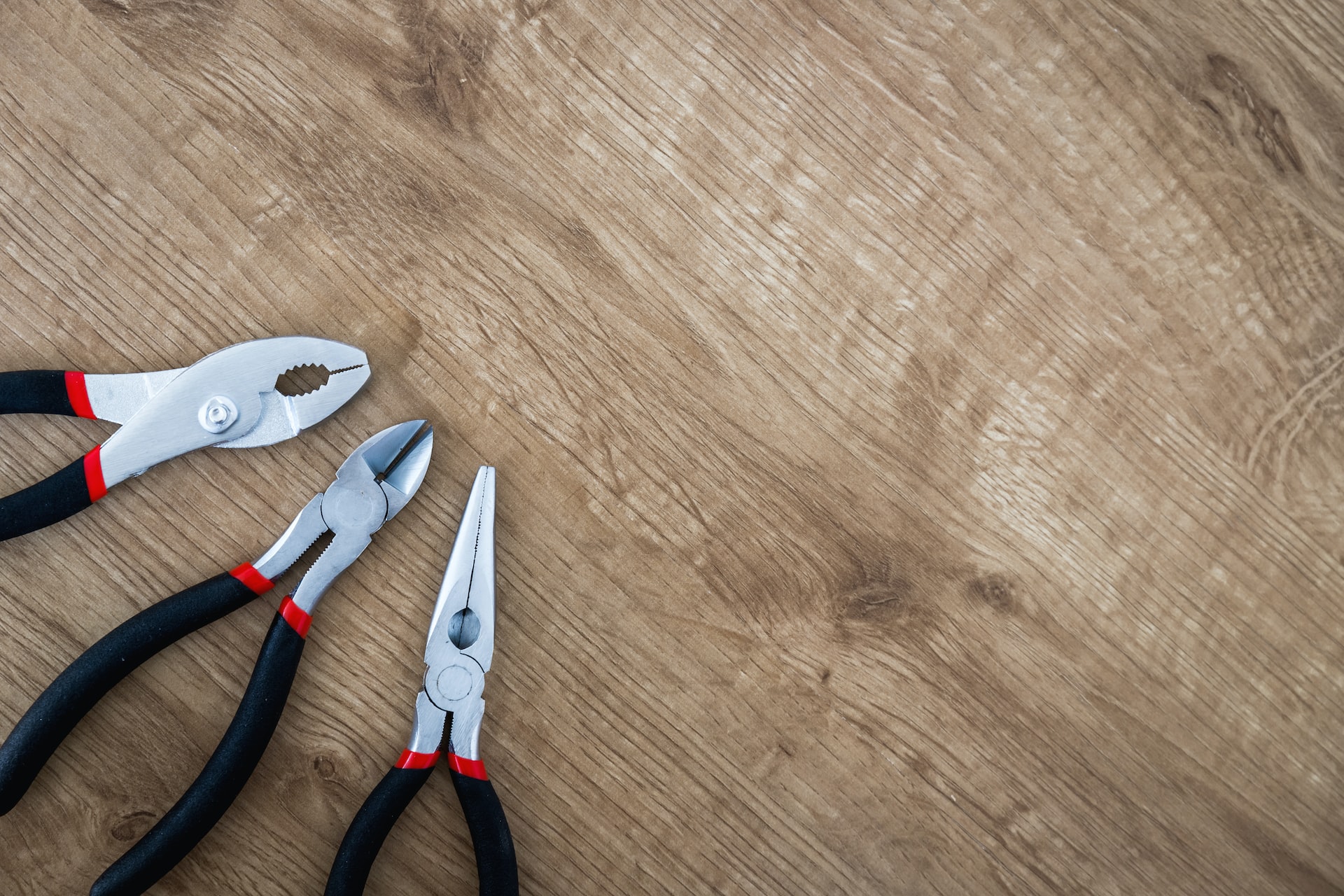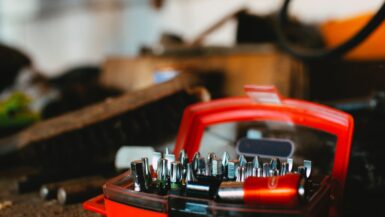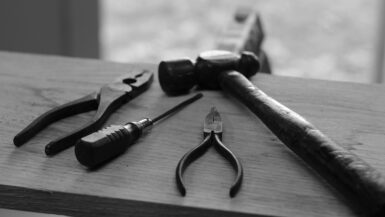Mountain biking is a thrilling and exciting outdoor activity that can offer an incredible year-round experience. But to keep the ride as safe and enjoyable as possible, it’s essential to keep your mountain bike in good condition through regular maintenance and repairs. This article provides a comprehensive guide on maintaining and repairing a mountain bike. From inspecting the frame and shock absorbers to replacing tires and adjusting brakes, you’ll learn all the basics for keeping your bike running like new.
Tools and Supplies Needed
You can easily maintain and repair your mountain bike with a few essential tools. These items can be found at a local hardware store or purchased in a mountain bike tool kit at a cycling store. Some crucial tools for bike maintenance include:
- Hex Wrench Set – Hex wrenches come in sets of Allen keys and are essential for adjusting and tightening bicycle components.
- Tire Pump – For inflating your bike tires, a hand pump or an electric pump will make the job easier.
- Chain Breaker – For removing and replacing bike chains, a chain breaker is essential.
- Tire Levers – Tire levers are small tools designed to help you remove and replace bike tires.
- Lubricant – Lubricant helps keep the bicycle components from getting too worn out from regular use.
- Multi-tool – One of the most useful tools for bike repair is a multi-tool, which includes several hex wrenches, screwdrivers, and more.
- Cable Cutters – Cable cutters are used for cutting and splicing bike cables.
Other Necessary Supplies for Bike Maintenance
Along with the tools mentioned above, there are some other supplies you may need for bike maintenance. These include:
- Tire Patches – For fixing punctures in the tire, tire patches are essential.
- Tire Tubes – When replacing a bike tire, it’s important to get the right size tire tube.
- Brake Pads – Brake pads should be replaced regularly to ensure proper braking performance.
- Spoke Wrenches – These small wrenches help you adjust the tension in your spoke nipples.
- Chain Oil – Chain oil helps lubricate the chain and reduces wear on the components.
- Bicycle Cleaner – A good quality bicycle cleaner is important for keeping your bike looking its best.
Safety Tips for Bike Maintenance
Before beginning any bike maintenance or repair, it’s important to make sure that you are taking proper safety precautions. Here are a few safety tips:
- Always wear safety glasses when working with tools.
- Read the instructions before beginning any repairs.
- Make sure that all nuts, bolts, and screws are properly tightened.
- Never try to disassemble a part without knowing how to reassemble it.
- Never attempt to repair or replace any parts without the proper tools.
Cleaning and Lubrication
Maintaining and repairing a mountain bike requires regular cleaning and lubricating of its parts. Taking the time to care for a mountain bike helps ensure it remains in top condition and performs reliably for many years.
Cleaning the Frame and Components
Its frame and components should be the priority when cleaning a mountain bike. It’s essential to use a suitable solvent and a cloth to remove dirt and grime, paying careful attention to the crevices of the frame. A soft brush can also help reach tight spots. Areas such as the bottom bracket, drivetrain, and fork should be wiped clean.
Keeping Chain and Gears Clean
Removing debris or dirt buildup is essential to keep the chain and gears of your mountain bike running smoothly. A brush and an approved degreaser should do the job. For persistent dirt buildup, spray the chain with a degreaser to loosen it. Finally, use cloths to ensure all excess degreasers have been completely removed.
Lubricating the Mountain Bicycle
To ensure your mountain bike runs smoothly, it should be lubricated regularly. Using an approved bike lubricant, apply it to the moving parts of the cycle – including the chain, derailleurs, and other metal parts. It’s essential not to use too much lubricant, which can attract more dirt and grime. Make sure to wipe away any excess oil to ensure proper functioning.
Inspecting and Adjusting Your Mountain Bike
Regularly inspecting and adjusting your mountain bike is essential for its continued performance. Periodically check the bolts, nuts, and other components of the frame and wheels to ensure they are tight. You should regularly inspect the brakes, derailleurs, and other moving parts of your mountain bike to ensure that they are functioning correctly. If any adjustments are necessary, use the proper tools to make them so that your cycle continues to work as intended.
Wheel and Tire Maintenance
Wheels are essential to any mountain bike and should be regularly inspected for wear and tear. As you check them, pay attention to the spoke tension, rim surface, and hub bearings for any signs of wear or irregularities. If you find any problems, have a qualified bike mechanic repair them. If you ride your bike on rough terrain, it is imperative to inspect the wheels regularly.
Check Tire Pressure
It is important to check tire pressure before every ride to ensure that the tread is in proper contact with the ground. Having the appropriate tire pressure will also help increase the efficiency of your ride and reduce the risk of getting a flat tire.
Choose the Correct Tire
Selecting the correct type of tire for your riding style is vital to maximizing performance and getting the most out of your bike. There are several tires to choose from, each designed for different riding conditions. For example, tires are designed for rough terrain, smooth trails, wet surfaces, and dry surfaces.
Replace Tires When Necessary
When tires become worn or damaged, they must be replaced as soon as possible. Riding on worn tires can increase the chances of having a flat tire and may result in poor performance and decreased efficiency. Inspect the tires every few months and replace them when necessary.
Clean and Lubricate
Regularly cleaning and lubricating your mountain bike’s tires is key to keeping them in top condition. Use a bike-specific cleaning solution to remove dirt and debris from the treads and wipe them entirely with a cloth. Apply a small amount of bike-specific lubricant to the tire’s sidewall and spread it evenly with a cloth. This will help keep the treads clean and reduce the risk of flat tires.
Brake Maintenance
It is vital to check your mountain bike’s brakes’ performance regularly. This will help identify any brake issues before they become a significant problem. Make sure to observe when your bike is standing still and in motion. They need attention if your brakes are not smoothly squeezing and releasing.
Clean Bike Brakes
The brakes of your mountain bike should be cleaned regularly. This is due to dirt and dust particles accumulating on the brake pads, which can reduce their efficiency. Use a mix of degreaser and warm water and a rag or brush to scrub off debris on the brakes. Please do not submerge the brakes in water or use a high-pressure hose.
Replace Your Bike Brake Pads
Make sure to replace your brake pads when necessary, as worn-out ones will provide little stopping power. Check for any wear and tear on the brake pad surface and look for any metal pieces sticking out. If the brake pads are excessively worn, it is time to replace them with a fresh pair.
Adjust Bike Brakes
You should also adjust the brakes of your mountain bike regularly to ensure they are working correctly. Start by loosening the screws that hold the brakes in place. Then, slowly turn the adjustment screws until the brake pads are snug against the rim. Make sure not to over-tighten the screws, as this can cause unnecessary friction and reduce the braking performance of your bike.
Check for Loose Nuts and Bolts
The last part of brake maintenance is to check for any nuts or bolts that may have become loose over time. Look around the brakes and inspect for any claims that are not fixed securely. If any details appear open, tighten them so the brakes can function efficiently and safely.
Gear Maintenance
It is essential to clean your mountain bike regularly to ensure optimal performance and durability. Start using a damp cloth to remove dirt and other grime from the frame and chain. To get the most out of your bike, use a degreaser to remove any oily residue from the chain, gears, and other moving parts. Once your bike is clean and dry, you can re-lube the chain and other components to keep them in top shape.
Inspect Your Bike
Aside from regular cleaning, you will also want to inspect your bike regularly to ensure it is in proper shape. Check the brake system, cranks, chain, and suspension for any signs of wear and tear. It would help if you also looked at the frame for any signs of rust or damage. If you notice any problems, replace the parts or take your bike to the nearest bike shop for repair.
Tune Up Your Bike
Performing regular tune-ups on your bike is essential to keep it in good condition. Start by inspecting the brakes and tires. Ensure the brakes are in good working order and the tires are inflated. You should also check the chain tension and adjust it as needed. Finally, tighten loose bolts and make sure all parts are adequately lubricated.
Basic Mountain Bike Repair
Having a basic understanding of mountain bike repair can help you save time and money. Be sure to have all the necessary tools, such as wrenches, Allen keys, and a torque wrench. If you are replacing parts, make sure they are the right size and type for your bike. If you have any doubts, consult a bike shop before attempting a repair.
Check for Wear and Tear
You should also check for wear and tear on your mountain bike parts from time to time. This is especially important for frequently used chains, brakes, and wheels. If you notice any wear or damage, replace the part as soon as possible.
Keep Spare Parts Handy
You are having spare parts on hand when mountain bike maintenance is always a good idea. Stock up on tires, tubes, brake pads, and chains to ensure you are always ready to make quick repairs. This will ensure you are always prepared for unexpected problems and will save you time and money in the long run.
Suspension Maintenance
Regular maintenance of your mountain bike’s suspension can ensure it performs well and works as it should. Properly maintained suspension helps absorb impacts, improve the grip of the tires, and can make a significant difference to your enjoyment and safety while riding off-road. Start by checking the suspension periodically and routinely replacing parts that aren’t functioning as they should be. Here are some tips for the maintenance and repair of your mountain bike’s suspension:
Check for Leaks
When checking your mountain bike’s suspension, look for any signs of leakage. Occasional Seals or O-rings can become worn out or cracked over time, which can cause your suspension to lose its ability to support the bike. If you notice any signs of leakage, then you should consider replacing the seals.
Replace Worn Parts
Check the condition of your mountain bike’s suspension components, such as the fork, shocks, and springs, and replace any parts that show signs of wear and tear. Pay close attention to the bushings, which allow the suspension to move freely and reduce friction. If the bushings are worn, they will need to be replaced.
Clean and Lubricate
Clean and lubricate your mountain bike’s suspension regularly to ensure it continues to perform well. Use a soft brush or rag to wipe down the suspension components gently. Next, apply some suspension grease or oil on the moving parts to keep them well-lubricated.
Perform Regular Adjustments
You should regularly adjust the fork, shock, and spring preload, compression, and rebound settings on your mountain bike’s suspension to ensure that it is set up correctly for your weight and riding style. Don’t forget to check the pressure and make additional adjustments.
By regularly maintaining and servicing your mountain bike’s suspension, you can ensure it continues to perform as it should and that you get the most out of your ride. The improved rest will make challenging terrain easier to ride on, and you can enjoy safer, more comfortable rides.
General Bike Maintenance Tips
One of the most critical mountain bike maintenance tips is to keep your chain clean. Make sure you clean your chain regularly – use a small brush or a cloth to remove dirt and oil buildup on the chain and its links. You can also use a specialized oil to maintain your chain in good condition. After cleaning, turn the pedals to ensure that the chain runs smoothly.
Check Your Tires
Regularly inspect your tires – check the pressure, tread, and overall condition of the tires. Ensure they are correctly inflated and have enough impression to provide the correct grip on the terrain you’re riding. Knowing the landscape you will depend on is essential for understanding the correct tire pressure and tread.
Check the Suspension and Brakes
Check the suspension of your mountain bike before each ride. Ensure the suspension parts are correctly lubricated and all bolts are tight. Moreover, inspect your brakes periodically and make sure they are appropriately adjusted and can provide the necessary braking power.
Check All Fastenings
Start from the top of your bike and check all the fastenings – the saddle, handlebars, stem, and crankset should be all tight and properly adjusted. Make sure to check the tightness of the screws and bolts regularly.
Check Gears and Derailleurs
Ensure the gears and derailleurs are correctly adjusted and free of dirt and rust. Check if the cables are appropriately tensioned and lubricate moving parts of the derailleur system if needed. Keep the chain clean and lubricated to ensure that the shifting of gears is smooth and accurate.
Regularly Lubricate Your Mountain Bike
Regularly lubricate your bike’s moving parts, like the chain, derailleur, pivot points, and brakes. This will help your bike to run smoothly and help its components last longer. Make sure to use the type of oil or grease recommended by the manufacturer.
Correct Storage and Care for a Long-Lasting Mountain Bike
Regardless of bike type or terrain, proper maintenance and repair are essential to ensuring the bike’s longevity. For those who enjoy the thrill of mountain biking, correct maintenance and repair will ensure the bike is ready for any terrain or trail. As with all bikes, regular mountain bike cleaning and upkeep are critical. This includes making sure the drivetrain is lubricated, tightening any bolts that may be loose, and regularly checking tire pressure. Regularly inspecting and replacing faulty components can prevent unnecessary maintenance costs further down the line. Additionally, storing the bike in a dry, fantastic location away from extreme temperatures or moisture can extend the life of the cycle. Following these simple steps, mountain bikers can ensure they have a reliable, long-lasting bike ready for whatever the trails bring.






Leave a reply